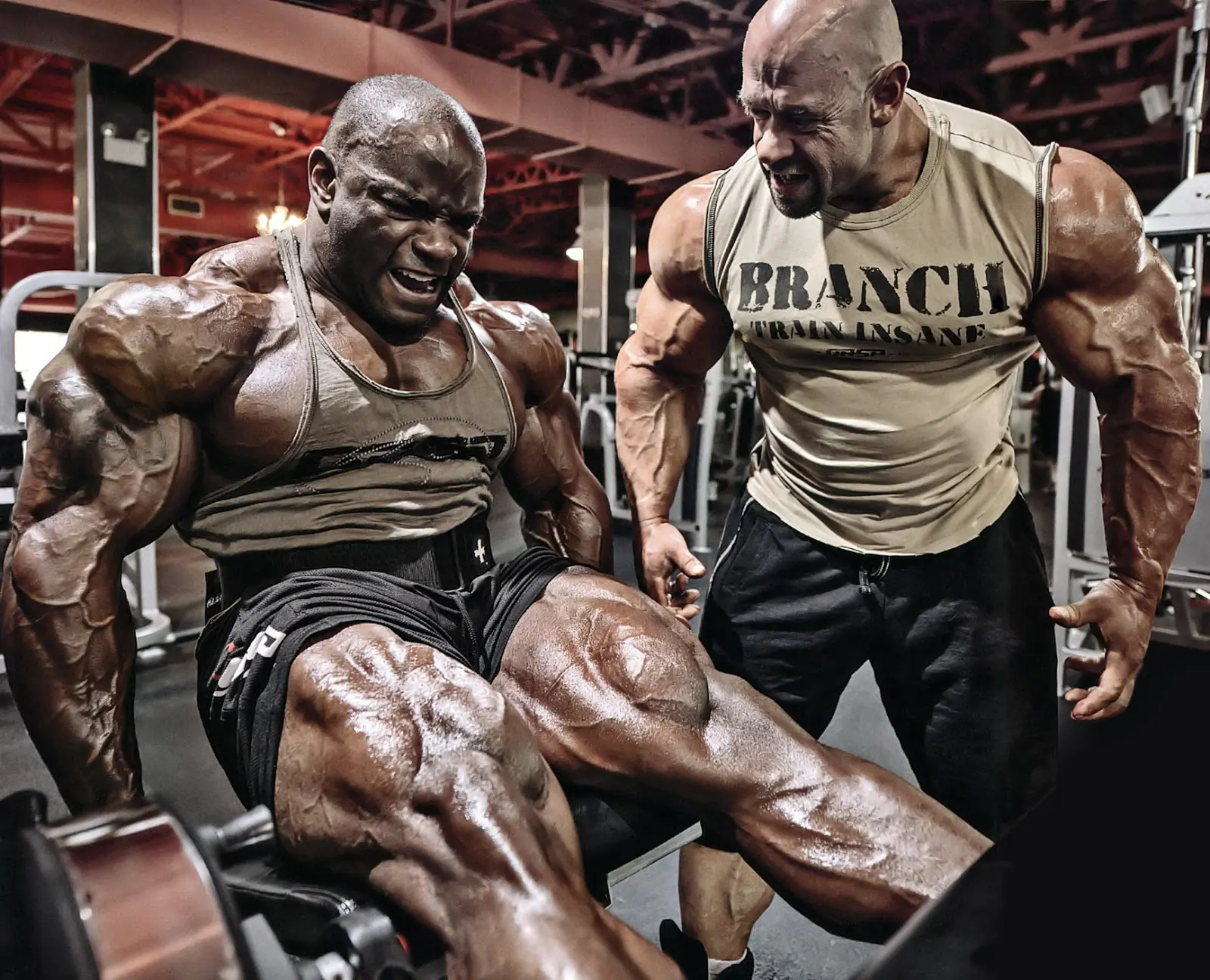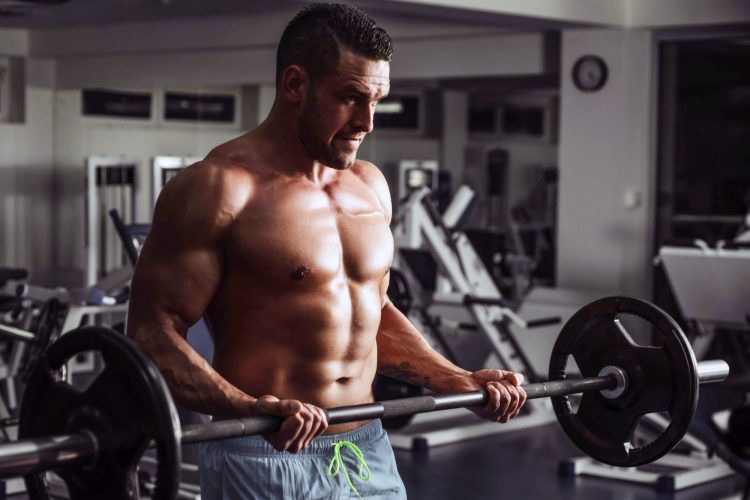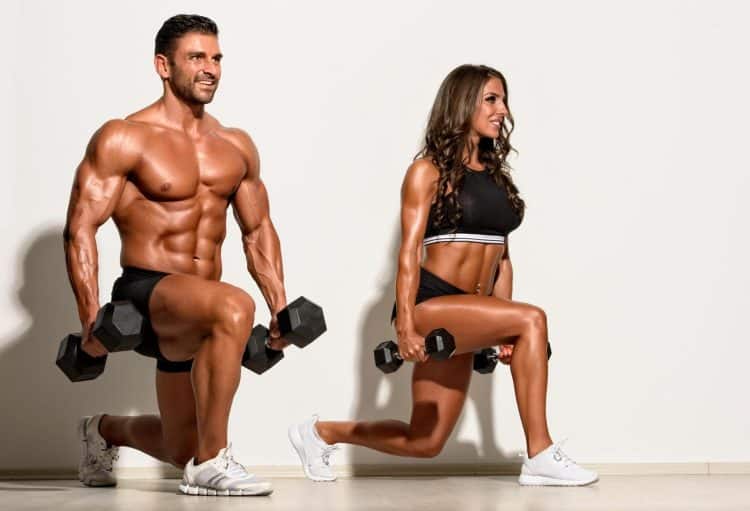Per experts, working out with a partner can offer accountability, motivation, and spotter support, but exercising alone allows for flexibility and focus. Ultimately, whether it’s better to work out alone or with a partner depends on your individual goals and preferences.
Here is a quick look at what science has to say on the subject:
According to a randomized controlled trial, exercising with a partner can improve performance on an aerobic exercise task. Notably, the partner doesn’t have to be physically present. Training with virtually present partners can improve performance on an aerobic exercise task across multiple sessions. (1)
However, a study published in the International Journal of Exercise Science found that exercising alone or with a partner did not affect motivation or fitness variables after four weeks of training. (2)
Throughout my 17-year lifting journey, I have trained with partners and solo. In this article, I’ll share the ins and outs of training with partners and on your own and the dos and don’ts to maximize your performance and results.
Perks of Solo Workouts
Level Up Your Fitness: Join our 💪 strong community in Fitness Volt Newsletter. Get daily inspiration, expert-backed workouts, nutrition tips, the latest in strength sports, and the support you need to reach your goals. Subscribe for free!
Training alone or with a partner has its fair share of pros and cons. Often, a weakness in one approach becomes a strength in the other. Here is everything you need to know about training alone:
Flexibility and Autonomy
When you train alone, you have the absolute freedom to choose the workouts, schedule, duration, and location. Training with a buddy requires you to match your schedules, which can be very challenging, especially if you are both busy individuals.
People who train with a buddy would agree that apologies for late cancellations, delays, and rushing through a workout are part and parcels of the arrangement.
No Distractions
Most training partners spend a good chunk of the rest time between sets talking about random stuff. These chats usually affect training performance. On the other hand, training alone allows you to zero in on your workouts, leading to maximum efficiency.
People who consider lifting weights a form of meditation and self-care are better off training alone.
Opportunity for Personal Growth
Solitary training can be incredibly empowering. Working out with a training partner can make you psychologically and physically dependent on your gym buddy. However, when you train alone, you build self-reliance, which is indispensable for long-term fitness success.
Furthermore, training alone allows deep focus. Some people thrive on quiet, uninterrupted workouts. Such focus can help develop a mind-muscle connection and amplify muscle pumps, which can promote hypertrophy and strength gains. (3)
Pro Tip: Wearing active noise-canceling headphones can help you find a deep sense of calm and composure during your workouts. It also tells people around you that you are unavailable for a conversation.
Personalized Programs
This factor is usually overlooked when talking about training in pairs. Each individual has unique strengths and weaknesses. When you train with a partner, the programming can cater to only one individual, meaning the interests of the other individual will have to take a back seat.
That said, most people have no idea how strength training programming works and spend most of their training careers following unoptimized workouts.
Competitive athletes should ideally train alone. If you need a spotter, I suggest hiring a coach who can be with you throughout your workout. This will allow you to tailor every set, rep, and tempo to laser-focus on your unique needs.
Benefits of Partner Workouts

Below are the advantages of working out with a partner:
Motivation
Partner training programs function on an unsaid agreement: Both training partners must respect each others’ time and show up without fail. Does this always work? No. But it is beautiful when it does.
A training partner can be a source of motivation and encouragement during a challenging set. A good training partner knows how to push your buttons to get the most out of you.
Consistency and Accountability
Many solo lifters tend to skip training body parts they don’t like. However, the chances of this happening if you train with a partner are very low as you don’t want to let them down or disappoint yourself. Training with a partner is the ultimate accountability hack in that sense.
Dr. Hirofumi Tanaka, a professor of kinesiology and health education at the University of Texas in Austin, believes working out with a training partner increases the probability that you will stick to your exercise regime for the long term.
“Starting exercise is easy—the difficult part is continuing to exercise. One predictor of success in terms of persistent exercise is the support of other people.”
Get Fitter, FasterLevel Up Your Fitness: Join our 💪 strong community in Fitness Volt Newsletter. Get daily inspiration, expert-backed workouts, nutrition tips, the latest in strength sports, and the support you need to reach your goals. Subscribe for free!
This is also why group exercise programs like spin, yoga, and Pilates classes are such a hit.
Furthermore, a 2021 study found that training with a romantic partner may improve their experience — both of exercising and overall day. It also concluded that romantic partners who train together are more likely to stick to their exercise routine. (4)
Helps You Get Started
Navigating the gym can be intimidating for beginners. A training buddy can show you the ropes and teach you the correct training techniques, which can limit injury risk and maximize your performance and results.
Pro Tip: Make sure the workout partner is experienced and has the skills to teach you the basics of resistance training.
Push Past Your Limits
I usually train with a partner for this benefit. Lifting the same weights for the same number of reps and sets for an extended period can lead to training plateaus. Training with a buddy can help you break through the overhead ceiling by safely increasing the training intensity and volume via advanced training principles like negatives and forced reps.
Working out with a partner also poses a psychological challenge. You will always want to one-up your training buddy. This healthy competition will keep both of you charged up for your workouts.
Learn and Expand Your Knowledge
I recommend training with a more experienced partner. That way, you can learn new techniques, exercises, variations, and mental models, which can improve your performance and results. It ensures your workouts are always exciting and fun.
You Cannot Train Alone
Let’s be honest: training alone can make you feel like a loner. It’s just you with your thoughts. However, some of us thrive on social connections and cannot imagine spending one to two hours daily without talking to people.
What the Experts Say
Arnold Schwarzenegger, the seven-time Mr. Olympia champion and the bodybuilding GOAT, is a proponent of training with a gym buddy.
“I always had a training partner since my earliest training days in Austria. I usually trained with two partners. That way, there was always one person there to encourage and spot me while the other person watched my form. It’s important to have partners who can challenge you. I loved training with Franco because he was so strong, and the camaraderie kept the workouts fun.” — Arnold Schwarzenegger

Many people assume that high-intensity and high-volume training requires a training partner. However, one of the pioneers of high-intensity training and golden-era bodybuilding legend, Mike Mentzer, thought otherwise.
“You don’t need a training partner to train hard. You can use your other limb for support on exercises that typically require a spotter, like bicep concentration curls. Employ slow negative reps for exercises like dumbbell side lateral raises and explode through the concentric phase.”
Exercise Scientist Dr. Mike Israetel (Ph.D. in Sport Physiology) is a huge proponent of training with a workout buddy.
“A training partner can help you stay motivated by holding you accountable and providing encouragement. They can also provide feedback on your form, which can help you avoid injuries and improve your results,” said Israetel. “A training partner can make training more fun by providing conversation and company. They can also help you learn new exercises by sharing their knowledge and experience.”
After analyzing hundreds of comments by industry experts, I’ve come to the following conclusion: Whether you choose to work alone or with a training partner depends on your personal preference and training objectives.
However, the scales are significantly tipped in favor of training with a partner.
Whether you train alone or with a buddy, you can occasionally switch your approach to challenge yourself and gain a new, fresh perspective.
Strength sports are ever-evolving and the people who are open to new information are the ones that make the most progress.
Finding the Right Workout Buddy
Getting a suitable training partner is easier said than done. Most people have to churn through several workout buddies before they land on one who complements their styles and training objectives.
Here are the factors you must consider:
- Fitness Compatibility: Find someone who is at a similar or slightly advanced level. Beginners shouldn’t hope to train with IFBB Pro bodybuilders. A mismatch can lead to a loss of motivation and increase injury risk.
- Reliability: Pick someone punctual and reliable. You must respect each other’s time. I recommend setting ground rules before starting training together.
- Positivity: A good training partner will always motivate you before a set and celebrate your wins. A negative mindset can hamper your performance and results.
- Matching Schedules: This is a no-brainer. If you must make significant adjustments to your schedules to train together, the partnership won’t last long.
- Open Communication: Choose someone you can be honest with. If the prospective partner is not open to constructive feedback, you should reconsider your pick.
Conclusion
Whether you train with a partner or alone depends on your preferences and objectives. I recommend trying both to find what works best for you. That said, feel free to employ a hybrid approach. For instance, solo trainers can train with a buddy once a week to shake things up in their training regime.
If you have any questions about training alone or with a partner, drop them in the comments below, and I’ll be happy to help!
References
- Irwin, B. C., Scorniaenchi, J., Kerr, N. L., Eisenmann, J. C., & Feltz, D. L. (2012). Aerobic exercise is promoted when individual performance affects the group: a test of the Kohler motivation gain effect. Annals of Behavioral Medicine: a publication of the Society of Behavioral Medicine, 44(2), 151–159. https://doi.org/10.1007/s12160-012-9367-4
- Swiantkiewicz, Kayla A. (2019) “Effect of Partner and Individual Exercise on Motivation and Fitness,” International Journal of Exercise Science: Conference Proceedings: Vol. 2: Iss. 11, Article 7. Available at: https://digitalcommons.wku.edu/ijesab/vol2/iss11/7
- Hirono, T., Ikezoe, T., Taniguchi, M., Tanaka, H., Saeki, J., Yagi, M., Umehara, J., & Ichihashi, N. (2022). Relationship Between Muscle Swelling and Hypertrophy Induced by Resistance Training. Journal of strength and conditioning research, 36(2), 359–364. https://doi.org/10.1519/JSC.0000000000003478
- Sackett-Fox, K., Gere, J., & Updegraff, J. A. (2021). Better together: The impact of exercising with a romantic partner. Journal of Social and Personal Relationships, 38(11), 3078-3096. https://doi.org/10.1177/02654075211012086










